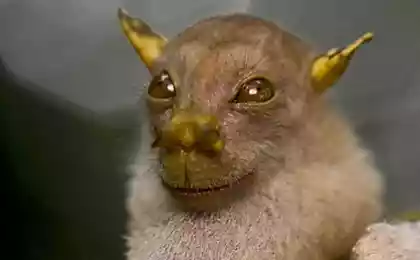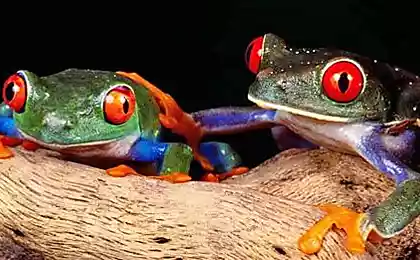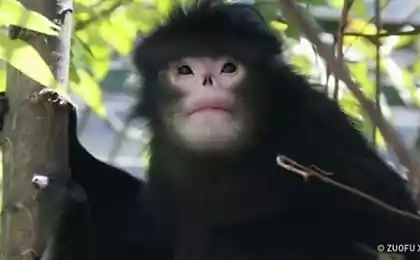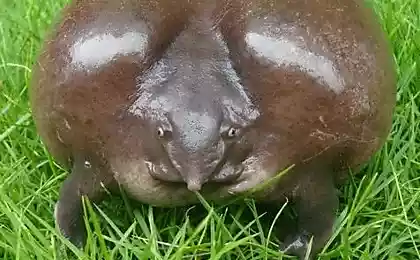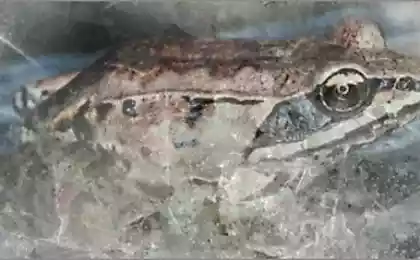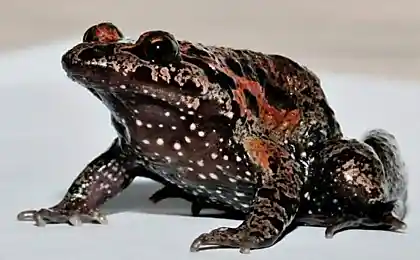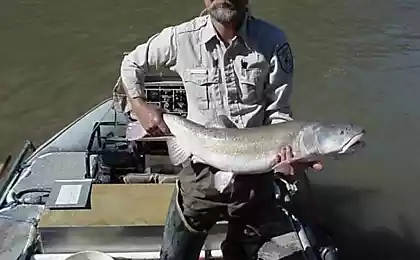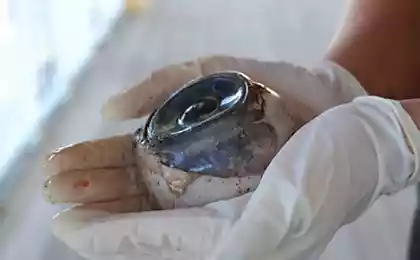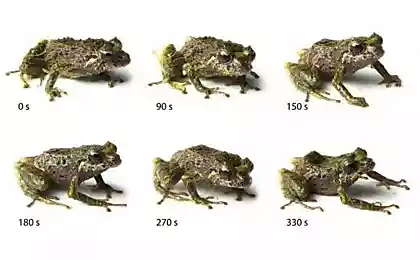5857
Unusual toad (15 pics + 2 video)
If a frog to move the roller as it would look?
As well as Suriname Pipa (Pipa pipa).
Let's learn more about it.
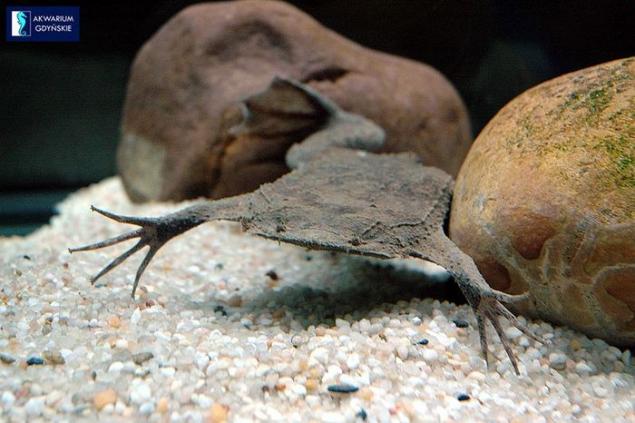
Pipa Surinam (Pipa pipa) differs ugly, almost quadrangular and flat trunk, triangular, tapering to muzzle his head, which is not separated from the body, and the thin front legs. Fingers front legs at the end are a few processes, and why Pip called "zvezdopaloyu» (Asterodactylus); hind legs are thicker and rather long, with long, sharp fingers connected full swimming membranes; in old animals the skin on the back fold, and in older females even mesh; before the eyes on the sides of the upper jaw noticed one or two pairs of tentacles, and near the corners of the mouth hangs another pair.
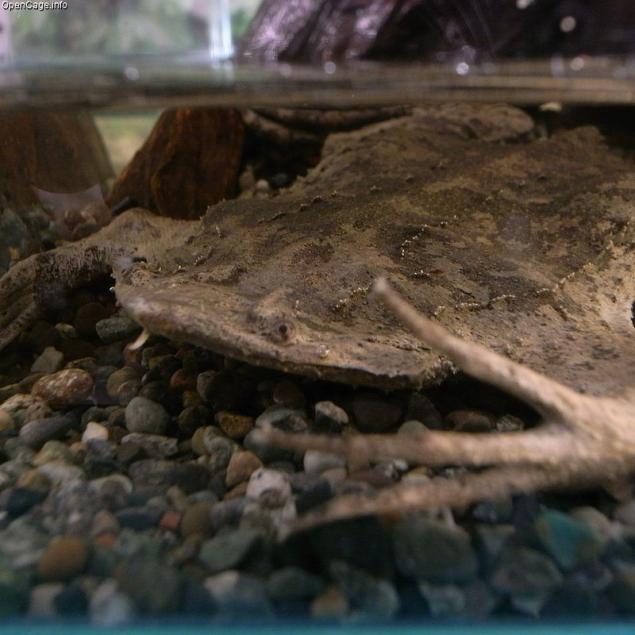
Common in South America. The area covers Bolivia, Colombia, Ecuador, Peru and Brazil. Water conducts lifestyle, settling, usually in small natural ponds or irrigation canals on the plantations. Rhode pip counts 7 species. Its members do not leave the water lifelong.
When obtaining food pipa is using a strategy scavenger. Forelimbs she digs the ground, vzmuchivaya sludge and pulls water from it food particles. Can be used to power and stationary objects.
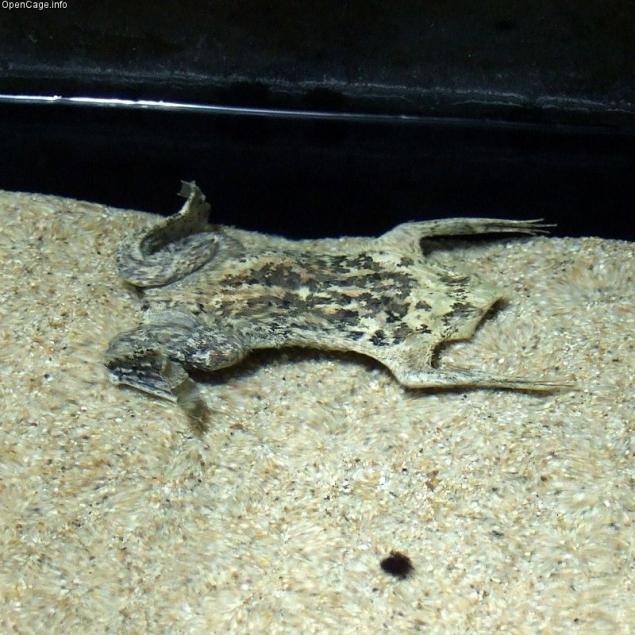
For content peep use large aquariums. The volume must be no less than 100 liters per couple, but it's better 200 - 300. At the bottom you can pour gravel, although Pipa manage without soil. The aquarium can be decorated with natural and artificial plants, need a good water filtration. The optimum temperature of 26 degrees. Food - large bloodworms, earthworms, small fish.
The front legs are no membranes, but there is a long, thin fingers - just as a musician! However, with their help, pipa does not play the piano, and loosens bottom mud, digging out something edible. On the fingertips are leathery star appendages, for what is often called the Surinamese peep zvezdolapymi.
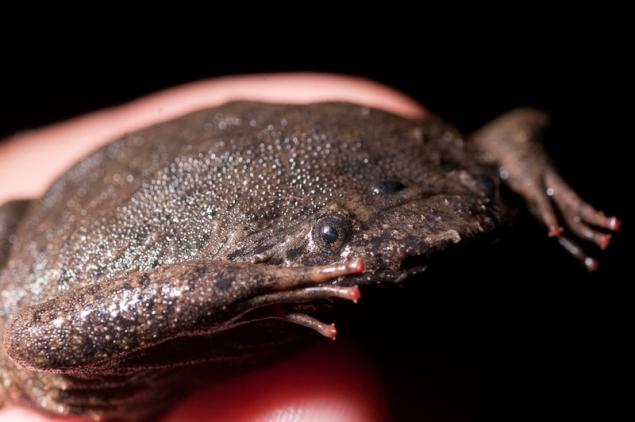
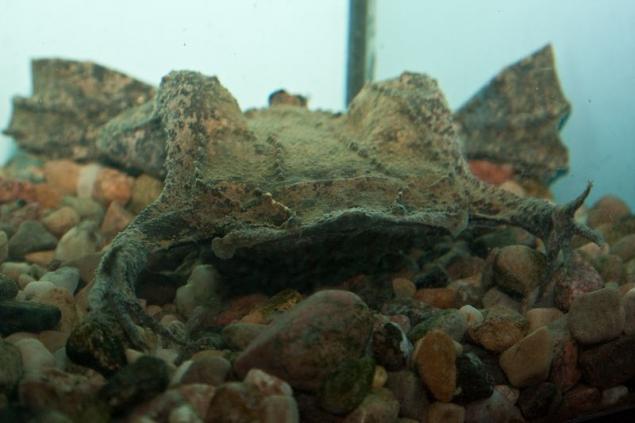
The strong hind legs with normal frog webbed serve them to move in the water. Colouring flattened body dvadtsatisantimetrovogo adult peep varies from blackish-brown to gray. Belly light, but sometimes it takes a dark stripe.
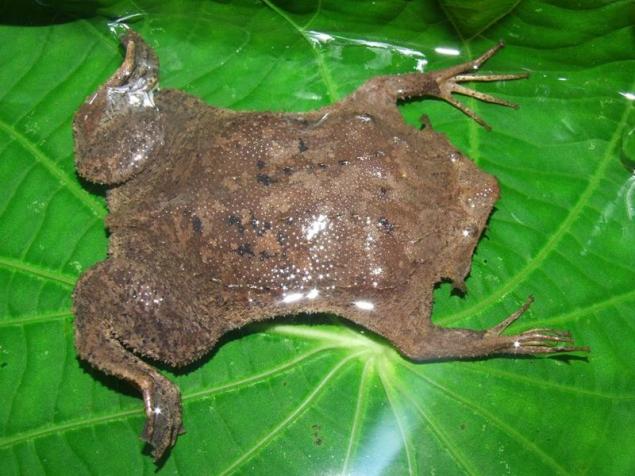
If you want to make this natural wonder in his apartment, will have to purchase a spacious aquarium 100 or better on the 200 or 300 liters, decorate it live or artificial plants and fill the bottom of the gravel. Water in it should be warm (about 26 degrees) and well aerated. Surinamese feed pip can bloodworms, earthworms and small fish.
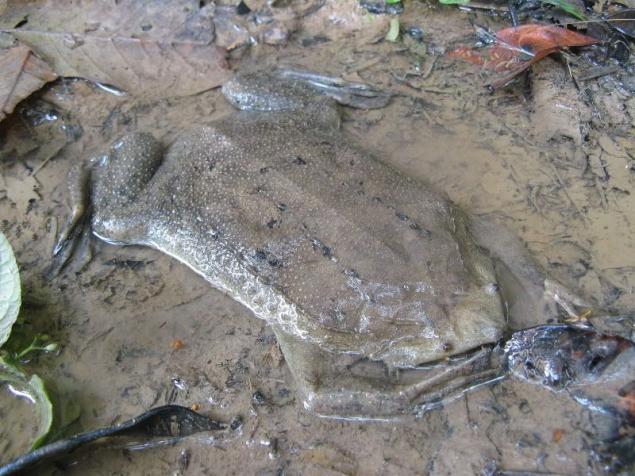
Former travelers say that pipa lives in the dark forest swamps, slowly and awkwardly crawls on the ground and distributes piercing smell, like the smell of burning sulfur. Observers describe most of the strange way of breeding Pipa, confirming information reported by Sibylla Merian and denying only its erroneous assumption that young pipa born on mother's back.
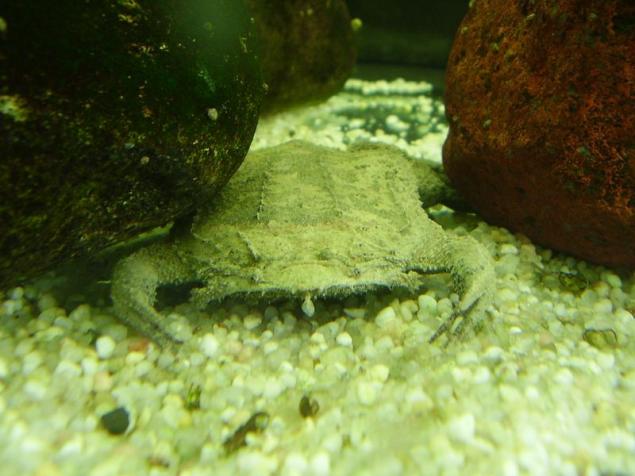
Pips frogs and toads live almost entirely in the aquatic environment. To do this, they have flattened bodies and relatively large compared to the rest of the body on the feet membrane.
Many reptiles have evolved quite a unique evolutionary path in a relatively small geographic area.
There are several different types of Surinam toads. View Ordinary pipa better known as Suriname toad usual.
Unlike other Bezyazichny toads in Surinam toads have sensitive areas on the tips of the front paws. They do not have claws, and they are mainly nocturnal.
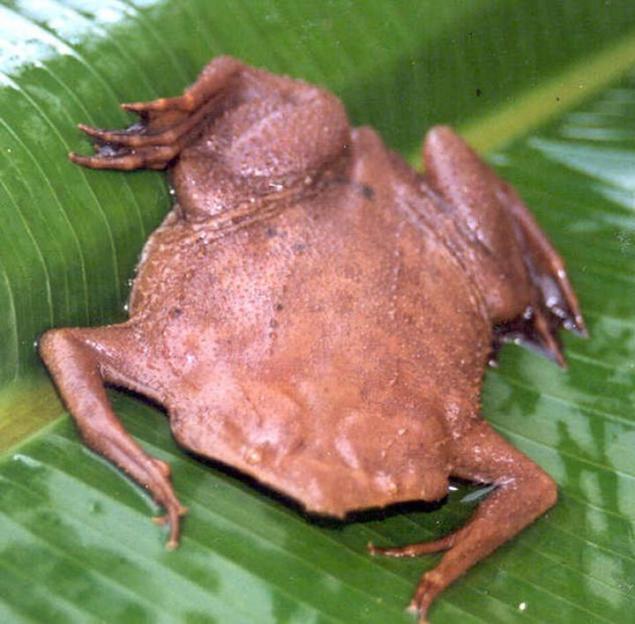
When people first see what happens with the Surinamese pipoy - could not believe my eyes: the kids in Pipa appeared straight out the back.
And not any, and fully formed. And not one or two, and a few dozen. Great connoisseur of nature and animals English naturalist J. Darrell, who oversaw the birth of one young pipa wrote: Even before I had to be the greatest witness many diverse births. But only rarely seen and absorbed amazes me how that night ...
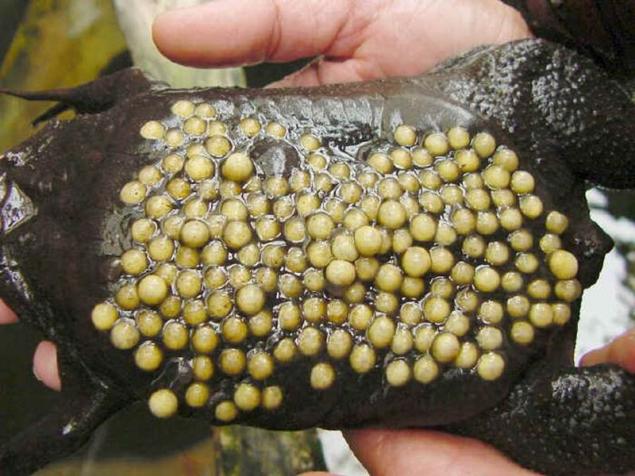
Of course, the appearance of the kids out of the back of Pippa - not procreation in the true sense of the word. Eggs and larvae develop Pipa, like eggs and larvae of other amphibians. Only happens in an unusual place.
Hardly the female lays an egg, the male catches him and gently places it on the back of the female, in a special cell. The same thing he does with the second and third, and fourth, and with all the other eggs. So they kept them even better presses and chest. Cells in which laid eggs every day become deeper and acquire six faces, similar to a honeycomb shape, and eggs to grow as in the back of the female. At the same time the upper part of each eggs dries, forming a translucent dome. That's where, in these cells, under the translucent dome-caps happening all supposed to happen.
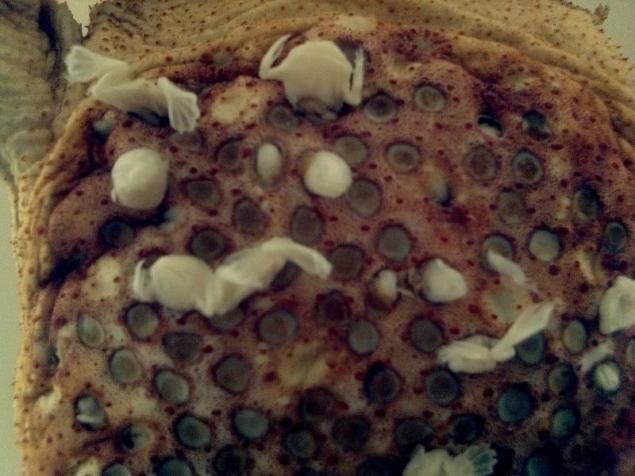
First, the developing fetus, then there are larvae, tadpoles, they also develop and turn into tiny zhabochek. Moisture in these cells, the cells enough power embryos and larvae get through the walls of the cells from the mother's body. Formed, tiny creatures lifted the dome-caps, fro unfamiliar world, and courage to get out of their cradles. Nevmeste about the mother, but soon leave it and start an independent life.
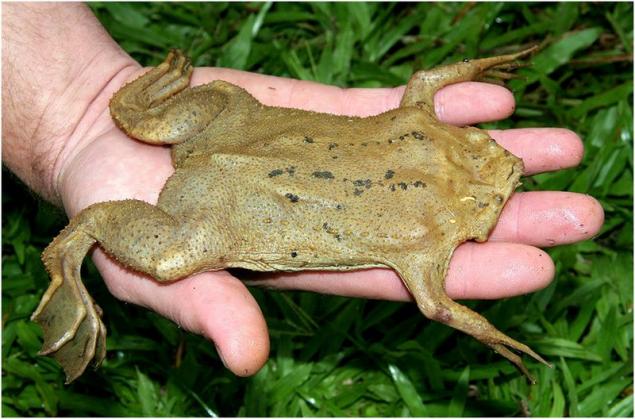
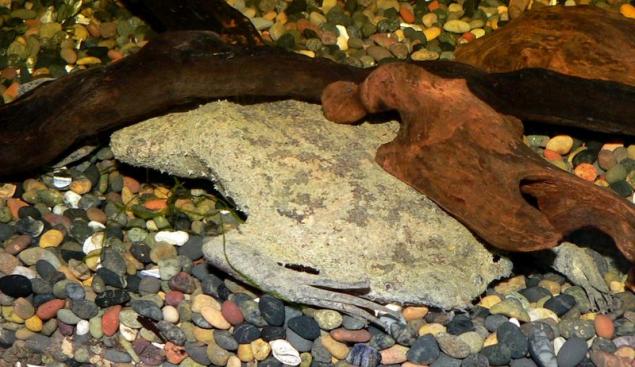
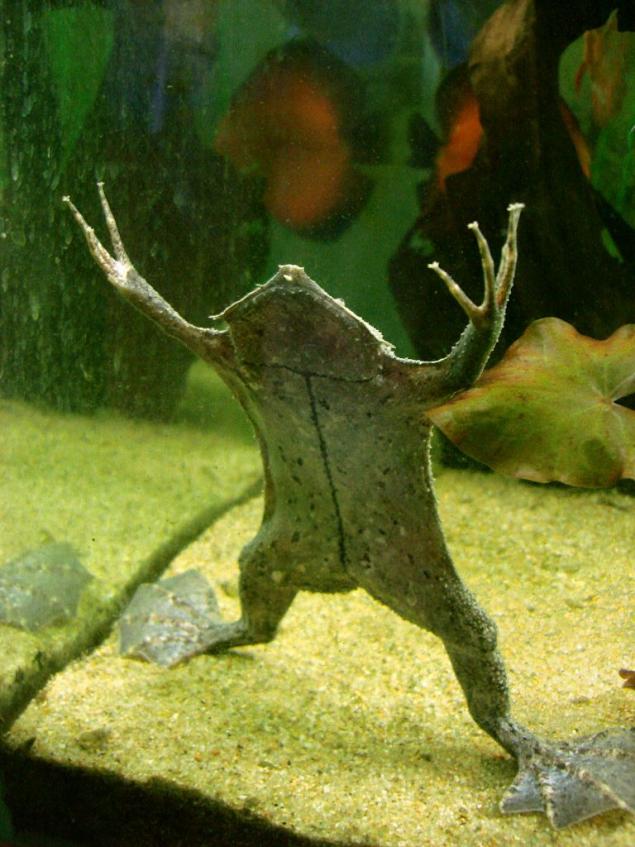
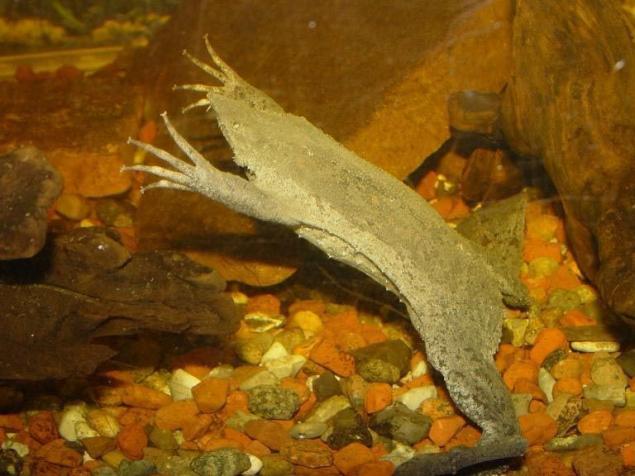
Suriname Pipa
Suriname Pip!
Do you know, without a doubt, with her?
Unfamiliar?
How so?
Whew!
Ay-ay-ay!
I blush for you!
Panda can not know,
Tuatara
Or griffon vulture -
But it is impossible not to know,
What kind of animal
Suriname Pip!
Although she lives
In a distant country - Suriname
And so rare, poor thing,
It occurs to us;
Although she is ugly
(Only modesty adorns her!),
Though she is from a family of frogs -
To meet her
Very, very not interfere!
... There,
In the shadow of Algarrobo, quebracho
And other exotic flora,
Evenings frogs and toads
Are incessant choruses.
Among croaking,
Ukanya,
Squeak, rattle and rumble
Hear your voice pure,
Suriname Pip!
..............
Frogs
Family feelings,
Usually weak.
About offspring
Usually
Do not grieve too
Toads.
And she -
This modest daughter of Suriname, -
Though the toad,
But
Extremely gentle mother!
Yes,
Do not toss it
How horrible
Eggs:
All eggs
Lying on her back,
How to soft perinki.
To the mother's body
(And the heart!)
They grow;
And,
Without a care,
Tadpoles grow in them
Slowly grow ...
Has not yet fulfilled the terms -
Babes
Pulled, and pulled, and pulled
Mother of juices ...
And then escape
Skipping
And quite forgotten about my mother.
(It happens,
According to rumors,
Not only one Surinam ...)
So live
Suriname Pipa.
Now -
I dare to hope -
You
At least in part
Met her!
If they ask you:
"What kind of animal Suriname Pipa?» -
Answer:
"It's a toad,
But a special type of toad! »
Boris Zakhoder
Source: www.zoopicture.ru
As well as Suriname Pipa (Pipa pipa).
Let's learn more about it.

Pipa Surinam (Pipa pipa) differs ugly, almost quadrangular and flat trunk, triangular, tapering to muzzle his head, which is not separated from the body, and the thin front legs. Fingers front legs at the end are a few processes, and why Pip called "zvezdopaloyu» (Asterodactylus); hind legs are thicker and rather long, with long, sharp fingers connected full swimming membranes; in old animals the skin on the back fold, and in older females even mesh; before the eyes on the sides of the upper jaw noticed one or two pairs of tentacles, and near the corners of the mouth hangs another pair.

Common in South America. The area covers Bolivia, Colombia, Ecuador, Peru and Brazil. Water conducts lifestyle, settling, usually in small natural ponds or irrigation canals on the plantations. Rhode pip counts 7 species. Its members do not leave the water lifelong.
When obtaining food pipa is using a strategy scavenger. Forelimbs she digs the ground, vzmuchivaya sludge and pulls water from it food particles. Can be used to power and stationary objects.

For content peep use large aquariums. The volume must be no less than 100 liters per couple, but it's better 200 - 300. At the bottom you can pour gravel, although Pipa manage without soil. The aquarium can be decorated with natural and artificial plants, need a good water filtration. The optimum temperature of 26 degrees. Food - large bloodworms, earthworms, small fish.
The front legs are no membranes, but there is a long, thin fingers - just as a musician! However, with their help, pipa does not play the piano, and loosens bottom mud, digging out something edible. On the fingertips are leathery star appendages, for what is often called the Surinamese peep zvezdolapymi.


The strong hind legs with normal frog webbed serve them to move in the water. Colouring flattened body dvadtsatisantimetrovogo adult peep varies from blackish-brown to gray. Belly light, but sometimes it takes a dark stripe.

If you want to make this natural wonder in his apartment, will have to purchase a spacious aquarium 100 or better on the 200 or 300 liters, decorate it live or artificial plants and fill the bottom of the gravel. Water in it should be warm (about 26 degrees) and well aerated. Surinamese feed pip can bloodworms, earthworms and small fish.

Former travelers say that pipa lives in the dark forest swamps, slowly and awkwardly crawls on the ground and distributes piercing smell, like the smell of burning sulfur. Observers describe most of the strange way of breeding Pipa, confirming information reported by Sibylla Merian and denying only its erroneous assumption that young pipa born on mother's back.

Pips frogs and toads live almost entirely in the aquatic environment. To do this, they have flattened bodies and relatively large compared to the rest of the body on the feet membrane.
Many reptiles have evolved quite a unique evolutionary path in a relatively small geographic area.
There are several different types of Surinam toads. View Ordinary pipa better known as Suriname toad usual.
Unlike other Bezyazichny toads in Surinam toads have sensitive areas on the tips of the front paws. They do not have claws, and they are mainly nocturnal.

When people first see what happens with the Surinamese pipoy - could not believe my eyes: the kids in Pipa appeared straight out the back.
And not any, and fully formed. And not one or two, and a few dozen. Great connoisseur of nature and animals English naturalist J. Darrell, who oversaw the birth of one young pipa wrote: Even before I had to be the greatest witness many diverse births. But only rarely seen and absorbed amazes me how that night ...

Of course, the appearance of the kids out of the back of Pippa - not procreation in the true sense of the word. Eggs and larvae develop Pipa, like eggs and larvae of other amphibians. Only happens in an unusual place.
Hardly the female lays an egg, the male catches him and gently places it on the back of the female, in a special cell. The same thing he does with the second and third, and fourth, and with all the other eggs. So they kept them even better presses and chest. Cells in which laid eggs every day become deeper and acquire six faces, similar to a honeycomb shape, and eggs to grow as in the back of the female. At the same time the upper part of each eggs dries, forming a translucent dome. That's where, in these cells, under the translucent dome-caps happening all supposed to happen.

First, the developing fetus, then there are larvae, tadpoles, they also develop and turn into tiny zhabochek. Moisture in these cells, the cells enough power embryos and larvae get through the walls of the cells from the mother's body. Formed, tiny creatures lifted the dome-caps, fro unfamiliar world, and courage to get out of their cradles. Nevmeste about the mother, but soon leave it and start an independent life.




Suriname Pipa
Suriname Pip!
Do you know, without a doubt, with her?
Unfamiliar?
How so?
Whew!
Ay-ay-ay!
I blush for you!
Panda can not know,
Tuatara
Or griffon vulture -
But it is impossible not to know,
What kind of animal
Suriname Pip!
Although she lives
In a distant country - Suriname
And so rare, poor thing,
It occurs to us;
Although she is ugly
(Only modesty adorns her!),
Though she is from a family of frogs -
To meet her
Very, very not interfere!
... There,
In the shadow of Algarrobo, quebracho
And other exotic flora,
Evenings frogs and toads
Are incessant choruses.
Among croaking,
Ukanya,
Squeak, rattle and rumble
Hear your voice pure,
Suriname Pip!
..............
Frogs
Family feelings,
Usually weak.
About offspring
Usually
Do not grieve too
Toads.
And she -
This modest daughter of Suriname, -
Though the toad,
But
Extremely gentle mother!
Yes,
Do not toss it
How horrible
Eggs:
All eggs
Lying on her back,
How to soft perinki.
To the mother's body
(And the heart!)
They grow;
And,
Without a care,
Tadpoles grow in them
Slowly grow ...
Has not yet fulfilled the terms -
Babes
Pulled, and pulled, and pulled
Mother of juices ...
And then escape
Skipping
And quite forgotten about my mother.
(It happens,
According to rumors,
Not only one Surinam ...)
So live
Suriname Pipa.
Now -
I dare to hope -
You
At least in part
Met her!
If they ask you:
"What kind of animal Suriname Pipa?» -
Answer:
"It's a toad,
But a special type of toad! »
Boris Zakhoder
Source: www.zoopicture.ru




